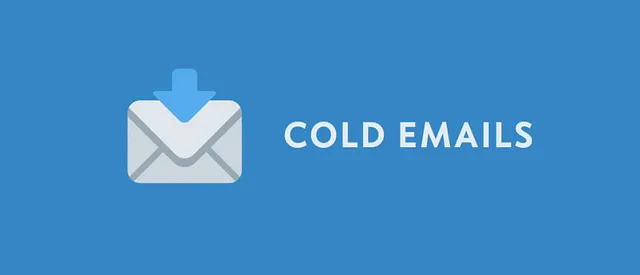Cold Emailing 101: Definition, Benefits, Uses & Real Examples
Wondering what a cold email really is and how it can help grow your business? This in-depth guide to cold emailing covers everything you need to know—from the definition of a cold email to its key benefits, best practices, and when to use it for maximum results. Whether you’re a marketer, freelancer, or entrepreneur, learn how to craft effective cold emails that get opened, read, and replied to.
In this post, how cold email outreach can help you connect with new leads, pitch your services, and build long-term business relationships. Includes clear examples, tips, and the 5Ws of successful cold email strategy
What Is a Cold Email?
A cold email is an unsolicited message sent to someone you’ve never interacted with before — typically in a professional setting. Unlike spam, it’s crafted with relevance and personalization in mind. The main goal is to introduce yourself, spark interest, and start a business conversation.
Think of it as a digital handshake. Whether you’re pitching services, exploring partnerships, or reaching out for networking, this type of email serves as your entry point into a professional relationship.
Why Cold Email Still Works in 2025
Despite the rise of social media, paid ads, and content marketing, cold email continues to be an effective outreach tool — especially in B2B settings. It offers direct access to decision-makers and allows businesses to communicate in a focused, personalized way.
Here’s why it remains relevant:
- Direct & Personal: You’re speaking to someone directly, not broadcasting to a mass audience.
- Low-Cost: Tools like Gmail, Outlook, and email automation services make it budget-friendly.
- Customizable: Messages can be tailored for industry, company size, or even job title.
- Global Reach: Geography doesn’t matter — you can email a prospect across the globe.
- High ROI: When done right, even a small campaign can generate great leads or partnerships.
Benefits of Cold Email Outreach
1. Budget-Friendly Communication
Marketing doesn’t have to be expensive. Cold email allows you to reach hundreds of potential leads without paying for ads or clicks.
2. Scalable Outreach
With email tools and CRMs, you can scale your outreach without sacrificing personalization.
3. Targeted Messaging
Since you’re choosing exactly who to contact, your message can be highly relevant to their industry or role.
4. Long-Term Relationship Building
Many successful collaborations, business deals, and client relationships begin with a simple introduction via email.
5. Opportunity Without Borders
Whether you’re a startup in New York or a manufacturer in Pakistan, cold outreach helps connect with global markets.

The 5 Ws of Cold Email
Understanding the who, what, when, where, and why behind cold email can help you craft better messages.
Who Sends It?
- Sales teams
- Entrepreneurs
- Freelancers
- Recruiters
- Affiliate marketers
What’s It Used For?
- Introducing services
- Pitching new products
- Recruiting candidates
- Initiating collaborations
- Expanding into new markets
When Should You Send One?
Research shows that the best times are midweek (Tuesday to Thursday) and mid-morning (10 a.m. to noon in the recipient’s time zone).
Where Is It Most Common?
Industries like SaaS, e-commerce, real estate, consulting, and digital marketing rely heavily on this method.
Why Use It?
Because it works. It helps you start real conversations that lead to real business opportunities — without the noise of social feeds or paid ads.
How to Write an Effective Cold Email
Here’s a simple structure to follow for better response rates:
1. Write a Strong Subject Line
Keep it short, interesting, and relevant. It should create curiosity without being clickbait.
Example: “Let’s Explore a Potential Partnership”
2. Start with a Personalized Greeting
Use the recipient’s first name if possible.
Example: Hi John, or Hello Ms. Patel,
3. Introduce Yourself Briefly
Explain who you are and why you’re reaching out.
4. Highlight the Value
Focus on what’s in it for them. Solve a problem, offer something helpful, or point out a mutual interest.
5. Add a Clear Call to Action
Suggest the next step — like scheduling a quick call or replying with questions.
6. End Professionally
Include your name, business name, website, and contact info.
Real-World Example
Subject: Wholesale Lederhosen – Let’s Connect!
Common Cold Email Mistakes to Avoid
Even a great outreach strategy can fail if you fall into common traps:
- Sending mass emails without personalization
- Using generic or clickbait subject lines
- Forgetting to include a clear ask or CTA
- Ignoring grammar or formatting
- Not complying with email regulations (like forgetting an opt-out)
Final Thoughts on Cold Email Strategy
In a digital world where attention is scarce, a thoughtful cold email can still cut through the noise. It’s not about blasting inboxes — it’s about starting real conversations with real people.
To succeed, keep it human. Show you’ve done your homework. Be clear, concise, and respectful of their time. If your offer provides genuine value and your message is relevant, your chances of getting a response go up dramatically.
Whether you’re selling a service, offering a partnership, or just looking to connect — the power of a well-written cold email is hard to beat.